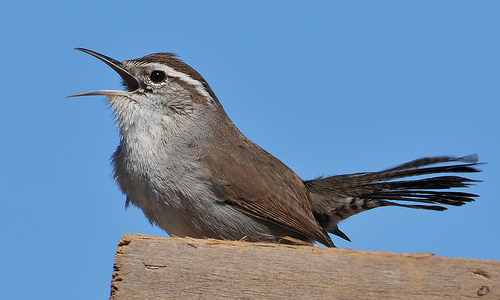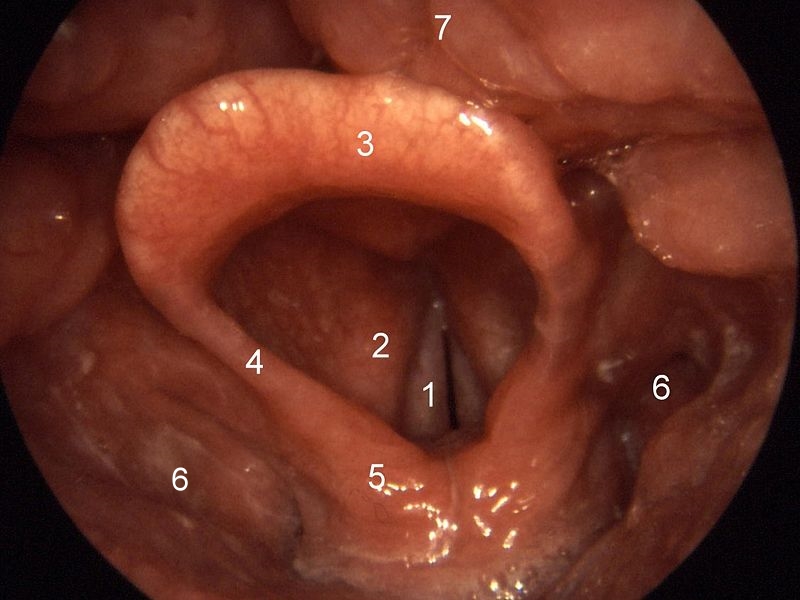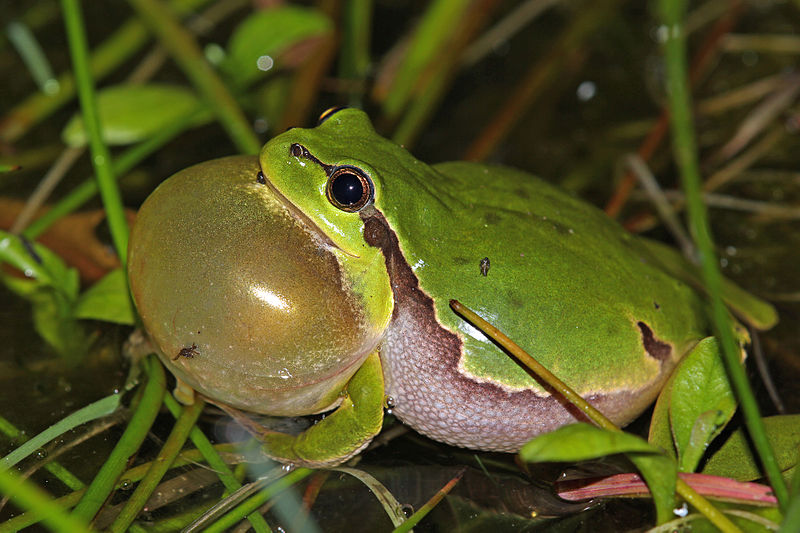Entries in vocal (1)
Sensational soundscape
 Saturday, November 10, 2012 at 05:47AM
Saturday, November 10, 2012 at 05:47AM  Photo by Matt KnothEvery now and then I like to sit very quietly and listen. With things to do and places to go, we tune out of most sounds most of the time, but the world is rarely – if ever – silent. Taking a few moments to listen and try to identify as many different sounds as possible is a very peaceful thing to do. It’s also fascinating and the other day it got me thinking. The animal kingdom is rich with sound, a glorious spectrum of tones and timbres. The range of animal sounds almost defies imagination, and the various techniques employed to produce these sounds is equally impressive.
Photo by Matt KnothEvery now and then I like to sit very quietly and listen. With things to do and places to go, we tune out of most sounds most of the time, but the world is rarely – if ever – silent. Taking a few moments to listen and try to identify as many different sounds as possible is a very peaceful thing to do. It’s also fascinating and the other day it got me thinking. The animal kingdom is rich with sound, a glorious spectrum of tones and timbres. The range of animal sounds almost defies imagination, and the various techniques employed to produce these sounds is equally impressive.
Humans (and many animals) produce vocal sounds with a larynx, an organ in the neck which is also involved in breathing and stopping food entering the windpipe. Basically we breath in and force this air across our vocal folds, which vibrate; this vibrates the air above the vocal folds producing a compression wave that we can hear. By adjusting the  The vocal folds. 1=vocal chords, 2=vestibular fold, 3=epiglottis, 4=aryepiglottic folds, 5=arytenoid cartilage, 6=sinus piriformis, 7=base of the tongue. Photo by Welleschick.muscles around the vocal folds, as well as the throat and jaw, we are able to change the pitch and timbre of the sound. Our tongue, teeth and lips then conspire to add the consonant sounds that we use for speech.
The vocal folds. 1=vocal chords, 2=vestibular fold, 3=epiglottis, 4=aryepiglottic folds, 5=arytenoid cartilage, 6=sinus piriformis, 7=base of the tongue. Photo by Welleschick.muscles around the vocal folds, as well as the throat and jaw, we are able to change the pitch and timbre of the sound. Our tongue, teeth and lips then conspire to add the consonant sounds that we use for speech.
To breathe (without sound), we open our vocal folds; to whisper we open them enough to cause some turbulence in the air leaving our lungs, but no enough to vibrate the folds. This leads to the “hissing” nature of whispering. As you might expect, this is basically the same way that snakes make their characteristic hiss. Many snakes can make other sounds too – my father tells the story of walking through the Malayan jungle and being confronted by a large python that rose up off the ground and roared. A snakes larynx is positioned high in the head and can be extended out of the way as the snake swallows its prey.
Humans can display an unusual range of vocal sounds, but many other animals also maintain a repertoire of sounds primarily by adjusting the settings in their larynx. Compare the “rough” sound of a dog’s bark to it’s howl or growl.
 A happy cat. Photo by Yumi KimuraThe difference between a cat’s meow and it’s purr is a little different. For most cat noises, the familiar system of air moving from the lungs across the vocal folds is used. When purring, however, cats use a system called active muscle contraction. In this case the throat muscles are rapidly contracted to make the vocal cords vibrate.
A happy cat. Photo by Yumi KimuraThe difference between a cat’s meow and it’s purr is a little different. For most cat noises, the familiar system of air moving from the lungs across the vocal folds is used. When purring, however, cats use a system called active muscle contraction. In this case the throat muscles are rapidly contracted to make the vocal cords vibrate.
It had been argued that this was the same technique used by elephants to produce very low pitched sounds (these are usually inaudible to humans and are known as infrasounds). In August of this year, researchers from the University of Vienna showed that elephants are able to make these sounds in the same way they make other sounds (without using active muscle contraction). At the other end of he spectrum, bats make very high sounds that are also inaudible to humans, but essential for bat echolocation. Speaking of elephants you might have heard about Koshik, a Korean elephant who has learned to say some Korean words. The most impressive part of this is that normal elephant sounds are very different to human sounds, and Koshik needs to insert his trunk well into his mouth to make the sounds.
 A frog and his vocal sac. Photo by Christian FischerFrogs can augment the sounds produced in their larynx with the use of a vocal air sac. The males of most frog species have air sacs. The frog inflates his vocal sac and makes a sounds using his larynx. The sound resonates in the inflated vocal sac, which makes the sound louder. As an interesting aside, frogs do not have ribs. Apart from making sounds, their larynx has a role to play as a sort of stop preventing their lungs collapsing during a dive, when there is increased pressure on the frog’s body.
A frog and his vocal sac. Photo by Christian FischerFrogs can augment the sounds produced in their larynx with the use of a vocal air sac. The males of most frog species have air sacs. The frog inflates his vocal sac and makes a sounds using his larynx. The sound resonates in the inflated vocal sac, which makes the sound louder. As an interesting aside, frogs do not have ribs. Apart from making sounds, their larynx has a role to play as a sort of stop preventing their lungs collapsing during a dive, when there is increased pressure on the frog’s body.
So far, the examples I’ve considered have been mammals, reptiles or amphibians.
I think birdsong is especially interesting and birds don’t make sounds in quite the same way. Bird sounds are made without a larynx or even vocal folds. The bird equivalent of a larynx is a syrinx. The syrinx is located at the base of the trachea, close to where the trachea separate into the 2 bronchi (which then conduct air between the 2 lungs). Air leaving the lungs vibrates membranes in the syrinx and birds have are able to exert muscular control over the syrinx in order to change the nature of the vibration and therefore the sound. What makes syrinx so interesting is that because is is located so close to where there are 2 bronchi, birds are able to make 2 different sounds simultaneously. This explains the complex - and I would say beautiful – nature of many bird songs. They can produce high and low sounds together or oscillate very quickly between such sounds. Consider the song of the Australian magpie or the butcherbird.
There are more examples on the Birds in Backyards website. And then there’s the astonishing mimicy skills of The fabulous lyrebird. Photo by Ryan Wick. the lyre bird. Check out this footage from David Attenborough’s ‘Life of Birds’.
The fabulous lyrebird. Photo by Ryan Wick. the lyre bird. Check out this footage from David Attenborough’s ‘Life of Birds’.
We send a lot our lives adding to the soundscape, so don’t forget to stop from time to time to listen to your fellow musicians.
